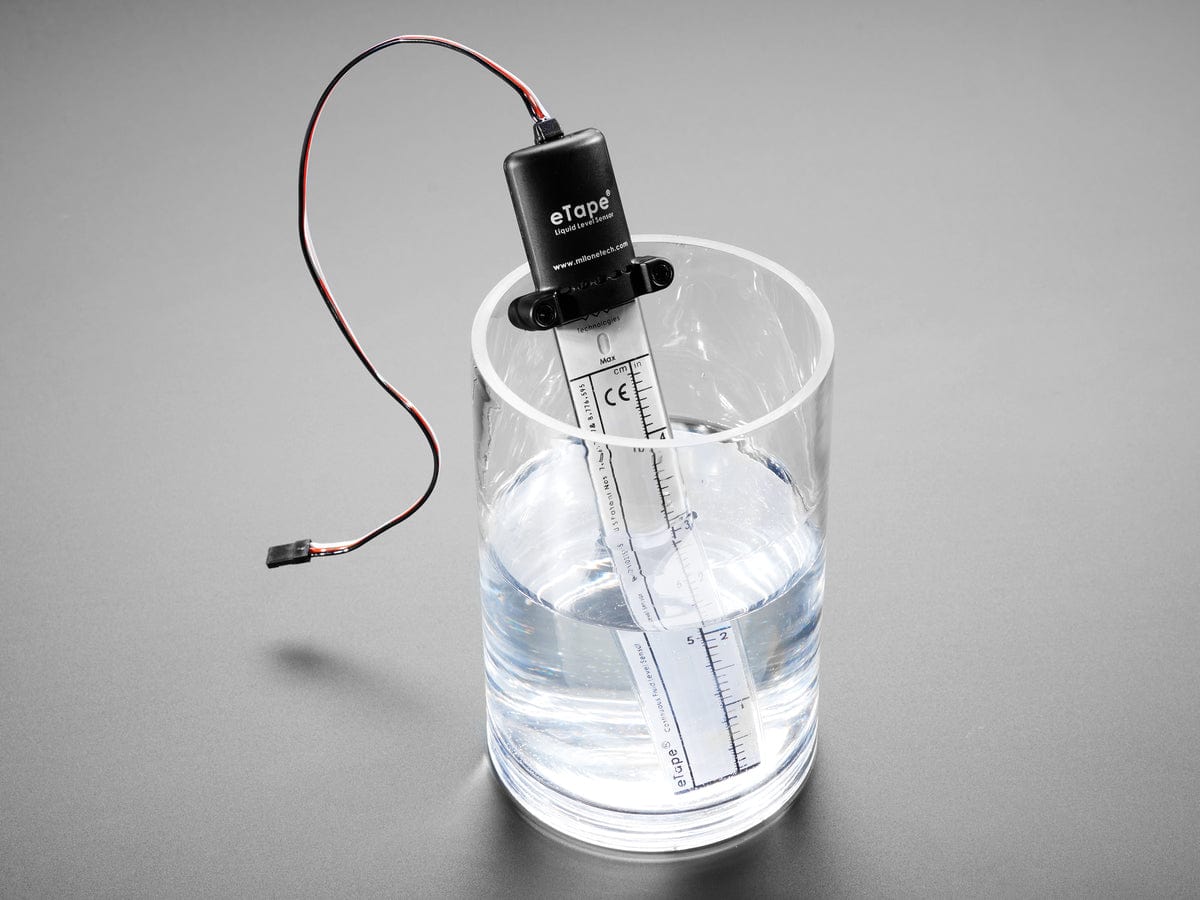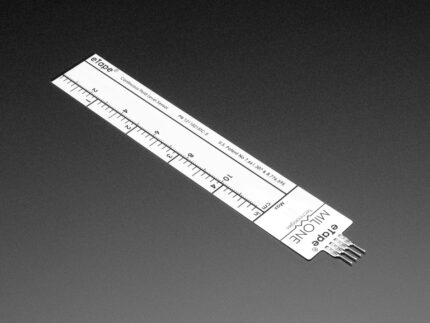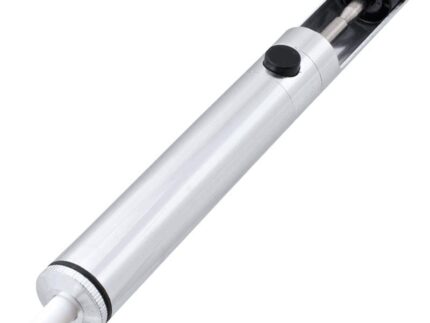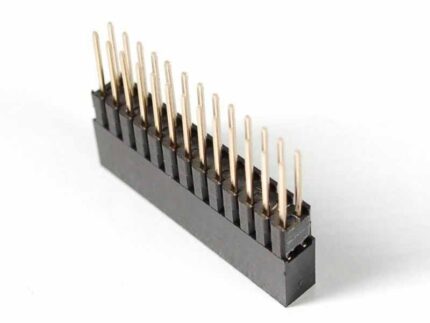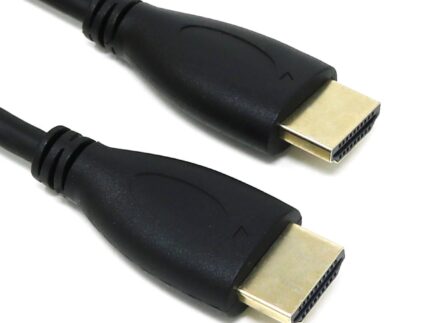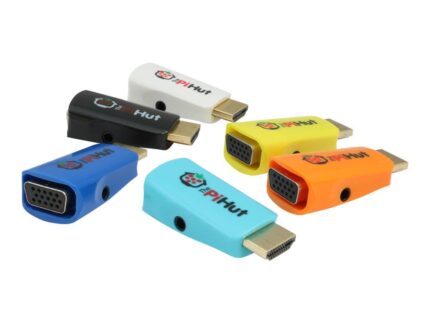5″ eTape Liquid Level Sensor with Plastic Casing
This eTape Liquid Level Sensor is a solid-state sensor with a resistive output that varies with the level of the fluid. It does away with clunky mechanical floats, and easily interfaces with electronic control systems. What differentiates this from our other eTape Liquid Sensors is the hard plastic jacket that makes it less susceptible to damage.
The eTape sensor’s envelope is compressed by the hydrostatic pressure of the fluid in which it is immersed. This results in a change in resistance that corresponds to the distance from the top of the sensor to the surface of the fluid. The sensor’s resistive output is inversely proportional to the height of the liquid: the lower the liquid level, the higher the output resistance; the higher the liquid level, the lower the output resistance.
This is a very unique sensor, and we haven’t seen anything else that is affordable and accurate for measuring liquid levels. This particular sensor is the 5″ version, and it comes with a 3-pin 2.54mm-pitch female connector.
Since the sensor is a resistive divider / analog out, it is easy to read it using a microcontroller/Arduino ADC pin. Connect the red wire to 3 or 5V power, the black wire to ground, then read the analog divider output on white
Check the tutorials tab for a quick-start pointer.
Please Note: This product only comes with the 5″ plastic enclosed eTape Liquid Level Sensor. In our demo, we set up a 12″ enclosed version with an Adafruit Metro, a TB6612 Stepper Motor Driver Breakout Board, and an Automotive Gauge Stepper Motor to demonstrate functionality.
Technical Details
- Sensor Length: 4.8″ / 124mm
- Wire Length: 11.4″ / 290mm
- Width: 1.1″ (28.2mm)
- Thickness: 0.015″ / 0.381mm)
- Resistance Gradient: 150Ω/inch (60 ohms/cm)
- Active Sensor Length: 8.4″ (213mm)
- Substrate: Polyethylene Terephthalate (PET)
- Actuation Depth: Nominal 1″ (25.4mm)
- Resolution: < 0.01″ (0.25 mm)
- Temperature Range: 15°F – 150°F (-9°C – 65°C)
For more information, check out the eTape Liquid Level Sensor Datasheet
We don’t have a detailed tutorial for this sensor but it acts very much like a thermistor so we suggest checking out that tutorial for background, and then following these instructions:
Connect pin #2 of the sensor to ground, then pin #3 to a 560 ohm resistor. The other side of the 560 ohm resistor to VCC (3.3V or 5V for example) to create a resistor divider. The ADC pin connects to the point between the resistor and sensor.
// the value of the 'other' resistor #define SERIESRESISTOR 560 // What pin to connect the sensor to #define SENSORPIN A0 void setup(void) { Serial.begin(9600); } void loop(void) { float reading; reading = analogRead(SENSORPIN); Serial.print("Analog reading "); Serial.println(reading); // convert the value to resistance reading = (1023 / reading) - 1; reading = SERIESRESISTOR / reading; Serial.print("Sensor resistance "); Serial.println(reading); delay(1000); }
Product Dimensions: 200.0mm x 28.2mm x 16.5mm / 7.9″ x 1.1″ x 0.6″
Product Weight: 31.7g / 1.1oz
- eTape Instructions & Application Notes
- Standard eTape Datasheet
